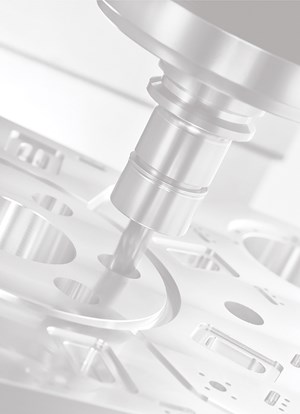Fiber Laser Welding Machine Uses Diode Pumps for More Power
IMTS 2018: ID1 fiber laser welding system from Alliance Laser Sales has more pure power per application driven by the diodes (and not dependent on any crystal or mirror life as with YAG lasers) and requires almost no maintenance.
Share



The ID1 fiber laser welding system from Alliance Laser Sales uses Fiber Solid State (FSS) laser technology, which generates laser power through a series of diode pumps instead of crystals and mirrors. This removes many of the intricate parts found in typical YAG lasers and results in virtually zero maintenance for the user, according to the company. The machine’s design also offers high beam quality, air cooling for high ambient air temperatures, low power consumption, long diode life (ranging to 100,000 hours), fewer necessary optics, and easy integration and service.
The swivel design provides unlimited head position configurations for greater job flexibility, 4.5-ft. travel and full 360-degree rotation. Alliance says that every part of this system is easily adjustable, giving the operator versatility and flexibility to meet most laser repair demands. It is designed to be manually adjusted, which eliminates the possibility for mechanical failure and offers the ability to focus on specific areas, ultimately reducing wear. Material applications include most tool steels, such as tool steel, stainless steel, carbon steel, titanium, aluminum, nickel, copper and beryllium.
Related Content
-
A History of Precision: The Invention and Evolution of Swiss-Style Machining
In the late 1800s, a new technology — Swiss-type machines — emerged to serve Switzerland’s growing watchmaking industry. Today, Swiss-machined parts are ubiquitous, and there’s a good reason for that: No other machining technology can produce tiny, complex components more efficiently or at higher quality.
-
Addressing Manufacturing Challenges with Automation
GrayMatter Robotics’ Physical AI robotic cells for manufacturing offer immediate impact and results.
-
How to Determine the Currently Active Work Offset Number
Determining the currently active work offset number is practical when the program zero point is changing between workpieces in a production run.













-02.jpg;maxWidth=300;quality=90)




